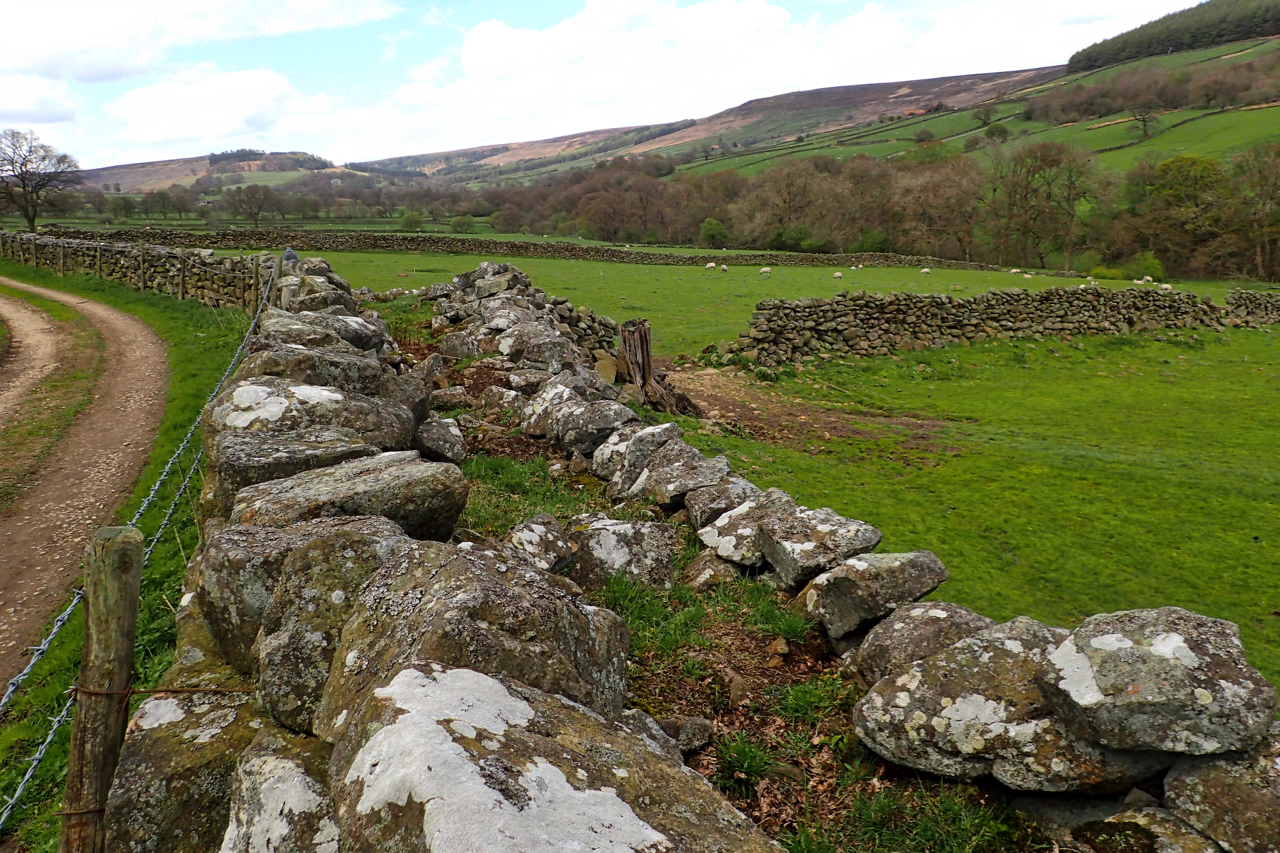Bransdale, the heart of the North York Moors, and a discovery of a peculiar arrangement of dry stone walling. I am on top of a double wall. To my left, a 5′ drop, to my right about a 10′. Not a particularly steep natural slope but the gap between the walls, about 4′ at the top, has been infilled, creating an oasis from the rapacious sheep. I noticed the young fronds of ferns unfurling, not normally growing on sheep pasture. Seemingly serving no agricultural purpose, why was it built?
I’ve come across exceptionally wide dry stones walls before, particularly in the Lake District. Known as “clearance walls”, they are the dumping points for excess stones collected over the years in field cultivation. A boulder free land surface is better for ploughing and mowing hay. They would have started out as cairns but over thousands of years, the cairns would merge as more stones became exposed through soil erosion. Obviously, this is all conjecture on my part but may indicate that the wall is very ancient, possibly one of the first walls to be created in the dale.

Leave a Reply